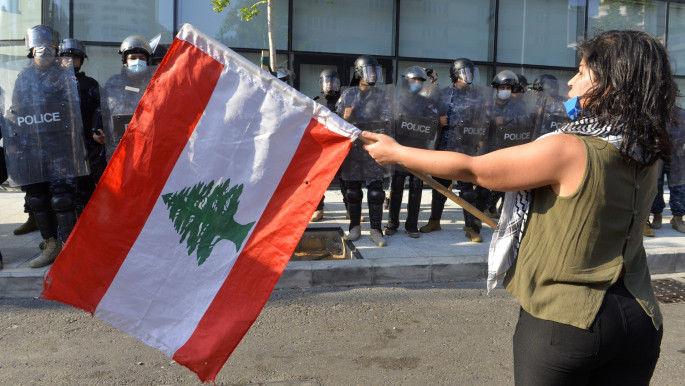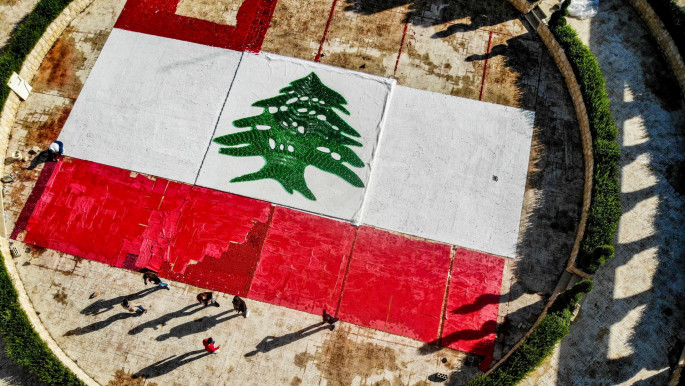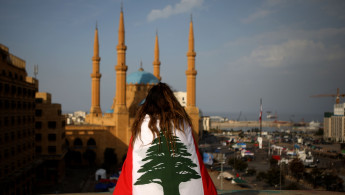Ramadan in the shadow of Lebanon's food price crisis
While the holy month, first observed on 12 April, is regarded as a joyous time for many around the world, it has been difficult for Lebanon's most vulnerable, who are reeling under the country's mounting crises.
The accelerating economic downfall in Lebanon and the consequent collapsing currency has put basic food items beyond the reach of many.
Inflation triggered a 400 percent price hike on food items in just one year and the consumer price index jumped 158 percent between March 2020 and March 2021.
A study dubbed the "Fattoush Index" was conducted by the American University of Beirut (AUB) Lebanon Crisis Observatory to find the approximate cost associated with making a bowl of fattoush for a family of five.
The research showed that the price of its ingredients, which include lettuce, tomatoes, cucumber, parsley, radish, and bread, has increased by 210% in the past year - concluding that the fattoush alone makes up 82% of the minimum wage.
 |
Inflation triggered a 400 percent price hike on food items in just one year and the consumer price index jumped 158 percent between March 2020 and March 2021 |  |
The same institute also highlighted that the cost of preparing an average Iftar meal for five people in Lebanon has increased by 23.4% in a single week, even as the exchange rate has remained unchanged.
"Given the latest numbers, the standard Iftar would cost a Lebanese family of five, 1.8 million LBP ($1,190) per month, almost 60,000 LBP ($40) per night," Nasser Yassin, associate professor at the American University of Beirut (AUB), and lead of the Observatory, told The New Arab.
"According to the 2019 figures of the Central Administration of Statistics in Lebanon, 42% of Lebanese households earn less than 1.2m LBP ($792) [per month], which means half of the Lebanese families can't afford a normal Iftar this year."
 |
|
| Read more: How Lebanon's supermarkets became a frontline in the fight to survive the economic crisis |
Tomatoes are rarely missing from a Lebanese meal, but tomato prices have doubled recently. According to one grocer, shoppers who used to cart kilograms of tomatoes away without a second thought are now rationing, purchasing half a kilo or a few tomatoes at a time, as Lebanon's supermarkets become a frontline in the economic crisis.
Crisis across society
Lebanon's economic crisis is affecting everybody; Lebanese citizens, refugees, and migrants.
"The latest vulnerability assessment shows that 90% of Syrian refugees in Lebanon are now below the poverty line," Yassin told The New Arab, "all the modest gains made in the last seven to eight years trying to respond to the needs of refugees has been lost in one year, and Lebanese have gone back to the 1980s, to the civil war times."
According to a United Nations study, the proportion of Syrian refugee families living in extreme poverty (with the equivalent of roughly $25 per month per person at current black market rates,) has increased to 89% in 2020, up from 55% the previous year. The drastic increase is due to the impact of the compounded crises.
More people reduced the amount or frequency of their meals, the report stated. Half of the Syrian refugee families surveyed reported experiencing food insecurity, up from 28% at the same time last year.
 |
This month, there is some charity work, people are helping each other, here and there, but God knows what will happen after Ramadan |  |
Economic turmoil, the result of years of corruption and mismanagement, has squeezed the Lebanese, pushing 55% of the country's five million people into poverty and forcing businesses to close their doors.
The middle class has been eroded, with middle-income earners now forming less than 40% of the population. The most affluent group in society has also shrunk to a third of its size over the past year, from 15% to 5% of the population.
These numbers are not just statistics, they represent hundreds of starving families with no source of income, struggling to survive in the absence of any government aid.
"In this month, there is some charity work, people are helping each other, here and there, but God knows what will happen after Ramadan," Yassin said.
 |
|
| Read more: In Lebanon, even vaccine distribution can't escape political bribery |
Community heroes
In an attempt to help those in need, local initiatives have emerged.
"It's a desperate situation in Lebanon, probably the worst one in years, so we are currently multiplying our efforts to reach all families in need," Maya Terro told The New Arab.
The #ShareYourBlessings campaign aims to provide life-saving food assistance on a weekly basis to at least 400 families who are at risk of starving.
Foodblessed, a local hunger-relief initiative that works with businesses and civil society to reduce the number of people going hungry in Lebanon, launched a local campaign for 2021 dubbed #SharingYourBlessings, which targets poverty-stricken areas across Lebanon, especially vulnerable and underprivileged families residing in rural areas like Tripoli, Akkar, Baalbeck, Bekaa, and the south.
According to the United Nations' World Food Programme (WFP), 960 million people globally do not have enough food to be healthy, of which 64 million live in Arab countries. This equates to roughly one in every six Arabs.
Hunger has become a chronic reality for some as a result of wars and economic crises, but even stable governments are concerned about the impact of the increase in global food prices.
Tala Ramadan is a journalist and activist who focuses on scientific, social, humanitarian, and educational issues.
Follow her on Twitter: @TalaRamadan



